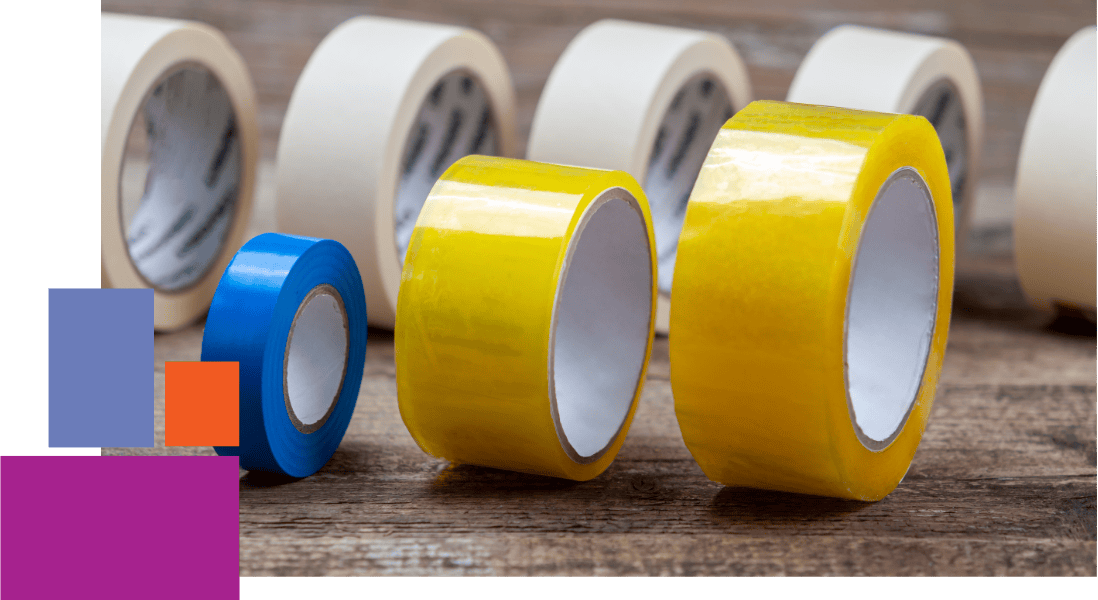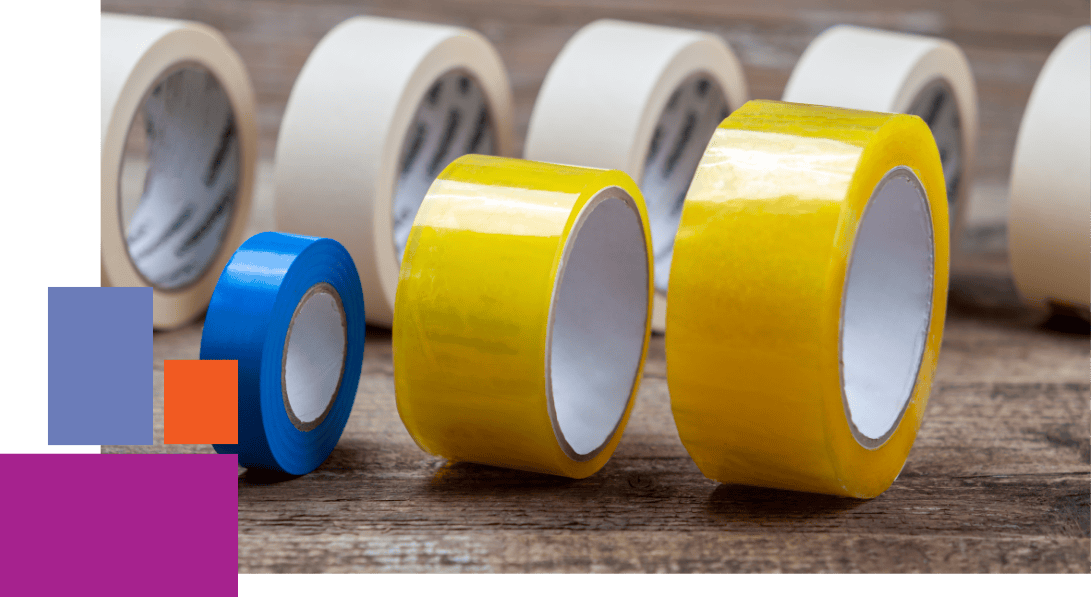Choosing the right packaging tape may seem like a simple task, but it's not always straightforward. Depending on the product you're packing or the environment your business is operating in, the parcel tape you choose plays an important role in securly sealing parcels and keeping contents safe.
Plus, with lots of different types of tape and various adhesives on offer. From polypropylene and PVC tapes to PET and paper tapes, combined with acrylic adhesive, hot melt glues or even water-activated ones - you have a huge spectrum of takes to choose from. So, how do you decide which tape has the best backing and adhesive for your parcels?
Plus, with lots of different types of tape and various adhesives on offer. From polypropylene and PVC tapes to PET and paper tapes, combined with acrylic adhesive, hot melt glues or even water-activated ones - you have a huge spectrum of takes to choose from. So, how do you decide which tape has the best backing and adhesive for your parcels?
Step 1: Assess the size, weight and fragility of your parcels
What you’re packing can be a key factor in deciding on any of your packaging materials – including the tape!
For everyday applications, polypropylene tape or PVC tape could be suitable. However, if you’re shipping heavier items, you may need a reinforced tape or one that has stronger properties. For fragile or breakable items, like glass, you may want to opt for a printed tape, that has warning messages on, like “Handle with Care”.
The size and weight of your parcels can also impact the width of the tape you need. For heavier items, you may want to opt for wider tapes. We recommend at least a 48mm width tape for standard shipping applications.


Step 2: Consider the environment you're packing in & any shipping requirements
The type of packing environment you’re working in may influence the type of tape you choose too.
Businesses operating in colder environments, particularly cold chain warehouses, will need to factor in a tape’s operating temperature. Different tape adhesives can perform more or less effectively in cold environments. Packing tapes with solvent adhesives will work in sub-zero environments, whereas acrylic and hot melt tapes are best used in ambient packing areas.


Step 3: Factor in any sustainability goals you want to meet
If you’re a business that’s serious about sustainability and recycling, you may want to consider high recycled content tapes or tapes that are easier to recycle, to help you achieve your sustainability goals. For example, you may want to choose gummed paper tape with a water-activated adhesive, if plastic-free packaging is a priority for you.
Picking tape well suited to your packing task can also help you use less material vs. an unsuitable tape. In turn, this can reduce waste!


Step 4: Consider any branding or communication needs
Do you want your logo on your tape or need to provide handling advice? Printed tape can be an easy, low-cost way to brand your packaging or communicate key messages.


Step 5: Review tape backing options
Backing is the main material your packaging tape is made from. Popular options include:
- Polypropylene – probably the most company tape backing, it can be used for all round applications.
- PVC – strong and durable, tape made with PVC backing is suitable for heavy duty applications.
- Paper – some paper tapes can be easier to recycle. Water activated paper tape can be particularly effective for sealing boxes.


Step 6: Review tape adhesive choices
The adhesive is the sticky stuff that makes your packing tape stick to other packaging materials. Common adhesives used in the manufacture of packing tape include acrylic, hot melt (natural rubber) and solvent adhesive. In addition, some paper tapes offer water-activated starch adhesives.
Acrylic is often one of the most popular adhesive choices and will form great strong bonds over time. Hot melt adhesives stick well in ambient temperatures, and solvent tapes have the widest temperature operation and are incredibly long-lasting, so can be good for items going into storage.


Step 7: Factor in application method
How you want to apply your tape – by hand or machine, can impact the type of packaging tape you choose too.
Certain adhesives like hot melt and solvent, are more suited to machine applications as they have a higher initial tack, which means they stick quickly to the surface you’re sealing.
If you want to use gummed paper tape, you’d need some sort of dispenser that moistens the tape before application.


Step 8: Select your chosen packing tape
After you’ve considered these different factors, you’ll be ready to choose the right packing tape for your business. For more detailed information, why not download our free in-depth guide to packing tape?




